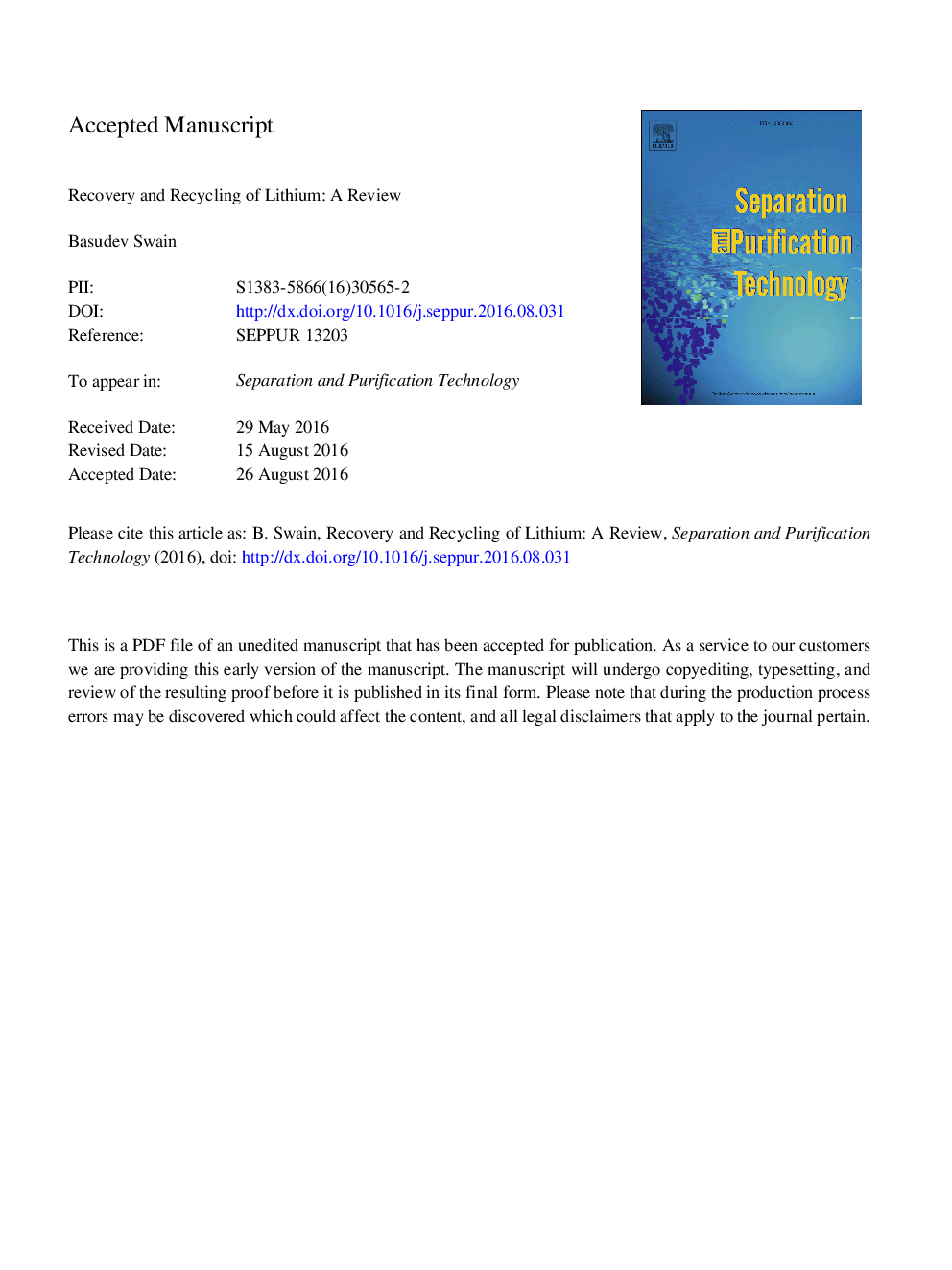| کد مقاله | کد نشریه | سال انتشار | مقاله انگلیسی | نسخه تمام متن |
|---|---|---|---|---|
| 7044233 | 1456948 | 2017 | 54 صفحه PDF | دانلود رایگان |
عنوان انگلیسی مقاله ISI
Recovery and recycling of lithium: A review
ترجمه فارسی عنوان
بازیابی و بازیافت لیتیوم: بررسی
دانلود مقاله + سفارش ترجمه
دانلود مقاله ISI انگلیسی
رایگان برای ایرانیان
کلمات کلیدی
بهبود، بازیافت، استخراج لیتیم، جداسازی و پاکسازی،
موضوعات مرتبط
مهندسی و علوم پایه
مهندسی شیمی
تصفیه و جداسازی
چکیده انگلیسی
Projected demands for lithium as LIB for the plug-in hybrid electric (PHEV), electric (EV) and hybrid electric (HEV) vehicle in the recent future is huge and estimated to reach $221 billion by 2024. Currently, 35% of global lithium production being used for LIBs and consumption for estimated LIB demand could be 66% (out of global lithium production) by 2025. During last five (2011-2015) years, global lithium production is almost constant. At present, up to 3% of LIBs are recycled with the only focus of valuable metal recovery, but motivation on lithium recovery almost nonexistence. The global rate of lithium recycling is only < 1%. Considering the current global lithium production with respect to projected demand, environment and regulation, green energy and energy security, cradle-to-cradle technology management and circular economy of critical metal and minimization of waste crime and maximization of the urban mining, recovery and recycling status of lithium should be well understood. In this review recovery of lithium from various resources such as different ores, clay, brine, seawater and recycling of battery by different technique are reviewed. Lithium recovery from various primary resources and its separation purification by different routes such as hydrometallurgy, pyro-metallurgy, chemical metallurgy, and bioleaching are discussed. Lithium recovery through chemical leaching, bioleaching, and floatation of different ores also thoroughly reviewed. The extraction of lithium from seawater by co-precipitation and extraction, ion-exchange and sorption by using various organic, inorganic and composite polymer sorbents has been discussed thoroughly. Although, several industries recovering lithium from primary resources, but lithium recovery from secondary resources almost non-existence. The non-existence of lithium recovery process from LIB or techno-economically inefficient process is a greater challenge for the projected lithium demand. As the cradle-to-grave technology is a sustainability challenge, cradle-to-cradle technology management could be achieved through efficient recycling. Hence, techno-economically feasible, environment-friendly and sustainable process needs to be developed and recommended. Considering technological advantages of hydrometallurgy process like; smaller scale, minimal energy investment, minimal CO2 emission, and the plant can be designed based on available waste, lithium recovery by hydrometallurgy should be focused.
ناشر
Database: Elsevier - ScienceDirect (ساینس دایرکت)
Journal: Separation and Purification Technology - Volume 172, 1 January 2017, Pages 388-403
Journal: Separation and Purification Technology - Volume 172, 1 January 2017, Pages 388-403
نویسندگان
Basudev Swain,
